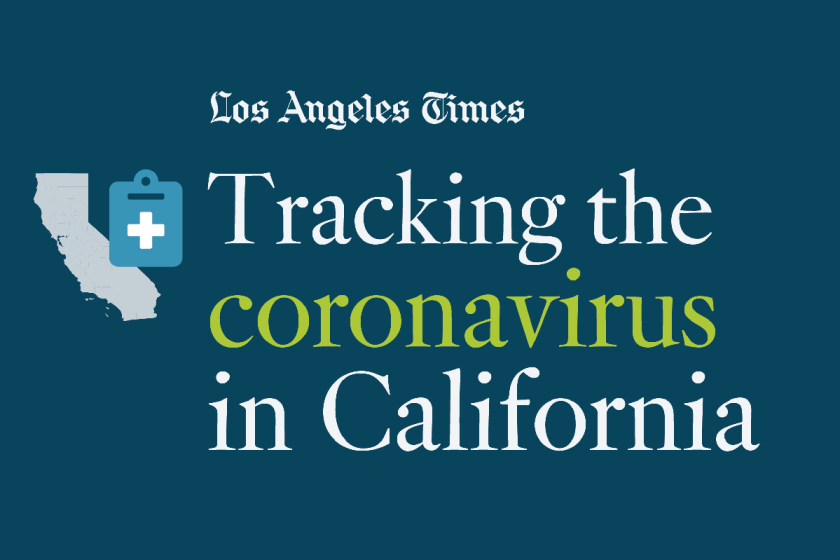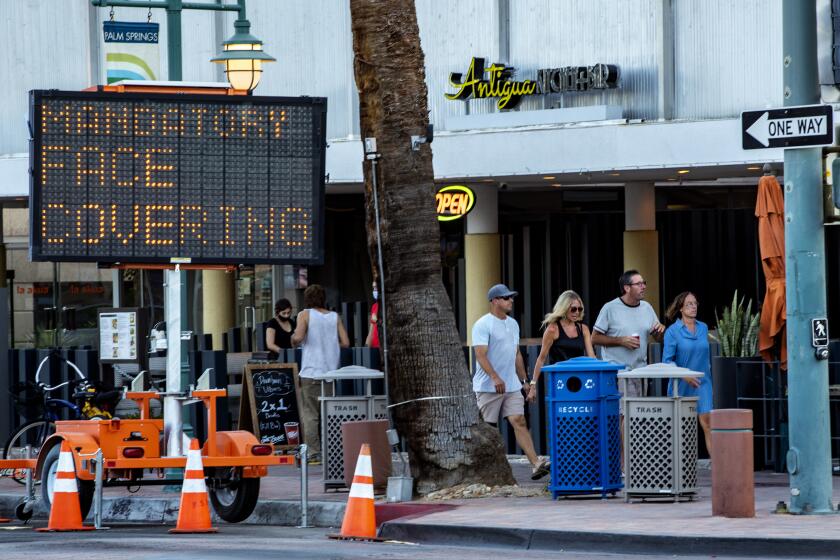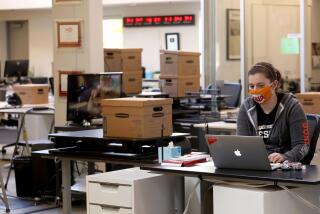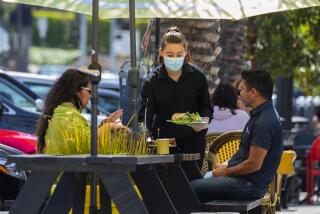Massage, tattoo parlors can reopen indoors as California relaxes some coronavirus restrictions

California cleared the way for additional businesses to resume some indoor operations this week, though officials continue to urge caution and stress that patrons and proprietors alike must remain vigilant amid the ongoing COVID-19 pandemic.
All personal care services — which include hair removal and massage and tattoo parlors — will now be allowed to resume modified indoor operations, regardless of their county’s position within the state’s four-tier reopening framework.
Other such establishments, including barbershops and hair and nail salons, were previously cleared to reopen their doors, though their customer capacity may be limited under California’s color-coded blueprint and they still must adhere to outlined coronavirus prevention measures.
The decision to allow additional businesses to open indoors was “based on a number of conversations, our looking at the data and the evidence,” California Health and Human Services Secretary Dr. Mark Ghaly said during a weekly briefing.
However, he preached caution.
“With every day in COVID, we can see something change and it can change quickly, so we want Californians to continue to keep their guard up, to be attentive to the local and state public health guidance and to limit their activities as much as possible,” he said Tuesday.
The onus of stemming the spread of the coronavirus is on business owners, too. During inspections of 437 businesses last weekend, Los Angeles County health officials said that almost half had not posted the safety measures they had taken to comply with protocols.
Though the majority of visited businesses were found to be in compliance with most health regulations, officials said Tuesday that “gyms need to improve on ensuring their employees and patrons are wearing a face covering.”
The latest maps and charts on the spread of COVID-19 in California.
With California’s COVID-19 case and fatality counts continuing to rise — the state officially surpassed 17,000 deaths and 884,000 confirmed infections this week — officials say that individual, everyday choices have as much power to shape the course of the pandemic as governmental policy decisions.
“We talk about that sector of personal responsibility; we talk about how we can do many things ourselves within our families, within our communities to keep spread down,” Ghaly said. “And we encourage Californians to keep doing that so we don’t see the slight increases turn into large increases in cases.”
Those recommended measures should be a familiar refrain to all Californians by now: Wash your hands, maintain physical distance, avoid mixing with other households, wear a mask in public, stay home when you’re sick and, especially important for this time of year, get a flu shot.
Those practices are more vital in light of a new wave of coronavirus cases striking other parts of the United States.
The U.S. has experienced about 300,000 ‘excess deaths’ since the coronavirus came to America, and two-thirds of them can be attributed to COVID-19, the CDC says.
Still, Ghaly stressed that “we must not let our guard down.” However promising recent data may be, COVID-19 is still widespread, and California is certainly no stranger to the ferocity with which a seemingly plateaued pandemic can rocket to new heights.
Based on the latest forecasts, the state is anticipating a 46% increase in COVID-19 hospitalizations over the next month, from the current 2,241 to a projected 3,271, according to Ghaly.
While down from earlier projections — last month the state forecast that 4,864 people would be hospitalized with COVID-19 by Oct. 25 — it’s “still an area of concern, and why we continue to push the different advice and risk-reducing behaviors that we talk about on a continual basis,” Ghaly said.
The pandemic also isn’t playing out uniformly across California, which presents unique and evolving challenges for state and local health officials.
This dynamic was on full display Tuesday, when Riverside County officially slid back into the most restrictive tier on California’s coronavirus reopening scale following an increase in its case rate, while San Francisco County moved to the least restrictive tier.
State officials said San Francisco benefited from the state’s addition of “health equity metrics” in assigning counties to various tiers. Such metrics look at the degree a county is testing and reducing case numbers in poor and disadvantaged communities, along with other factors.
California health officials will devote additional resources to curb coronavirus transmission rates in Riverside, L.A. and San Bernardino counties.
State officials have also announced plans to devote additional resources to curb transmission of the virus in Riverside, Los Angeles and San Bernardino counties — all of which are in Tier 1, or the purple tier, which indicates widespread risk of local infection.
Resources could include increased testing capacity and availability, additional assistance for those who have to isolate, business enforcement and education efforts.
As for what the road ahead looks like, Ghaly said he hopes “that, even though we’ll likely see some increase in cases, that it’s something that California keeps relatively low, that our hospitals are able to handle the volume with a great deal of success.”
“Rest assured, we’re prepared for any of those scenarios. But I think, compared to other parts of the nation and the globe, that our approach is helping us in part now,” he said, giving credit to Californians who are keeping their guard up.
“I believe that’s carrying us through now, unlike some other parts of the nation and the globe that are certainly having a different approach and different experiences than where we are today.”
More to Read
Start your day right
Sign up for Essential California for news, features and recommendations from the L.A. Times and beyond in your inbox six days a week.
You may occasionally receive promotional content from the Los Angeles Times.










